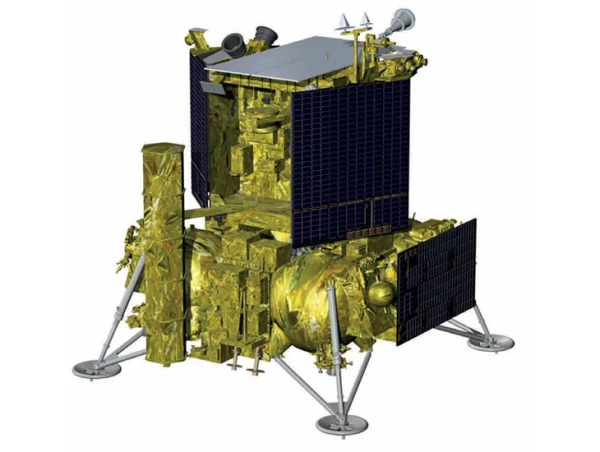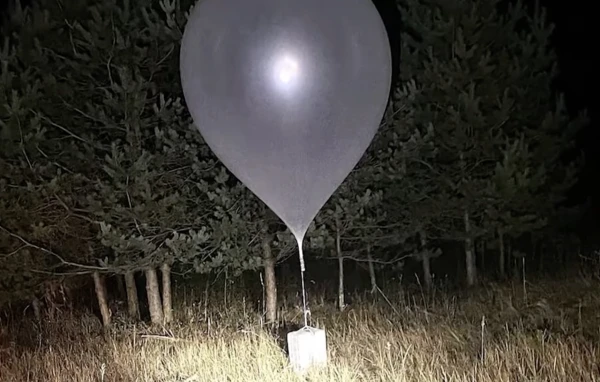
Astronauts in orbit are already undergoing additional checks and receiving radiation protection.
Solar flares, flight cancellations, temporary internet outages — these are just the tip of the iceberg compared to the ticking time bomb hidden beneath the Earth's surface. Scientists still do not know exactly when the explosion will occur.
Unexpected Discovery
At first glance, our planet seems stable and predictable. But beneath its surface, processes are underway that could radically change the situation. An example is the South Atlantic Anomaly: a weak magnetic field that has been rapidly growing in recent years.
The European Space Agency (ESA) recently published the results of a study that prompted experts to speak of a "warning signal." According to data from the Swarm mission satellites, which monitor the Earth's magnetic field, the area of the anomaly has grown since 2014 to the point where it can now be compared to almost half the territory of continental Europe.
The expansion of the zone is uneven. This creates additional risks not only for scientific missions but also for the entire technological infrastructure.
How the Earth's Magnetic Field Works
The magnetic field is a natural protective barrier formed by the movement of molten iron and nickel in the outer core. This invisible shield deflects charged particles from the solar wind, protecting the Earth from radiation.
If we imagine the planet as a giant magnet, then in the South Atlantic Anomaly it seems to have lost its strength — the field intensity here is significantly lower. As a result, spacecraft flying over the South Atlantic enter a zone of increased radiation.
Satellites in low orbits are forced to regularly cross this area. It is here that the most frequent malfunctions in electronics, data resets, temporary sensor outages, and even chip burnouts are recorded.
Geophysicist Chris Finley, who participated in the study, notes that "unique processes are occurring in the planet's inner core" in this area.
"Typically, we expect to see magnetic lines emanating from the core. But under the South Atlantic Anomaly, we see the opposite process," the scientist explains.
He compares this phenomenon to a "thin crack" in the Earth's protective shell through which radiation seeps.
What Satellites and Scientists Are Already Observing
Over the past 11 years, ESA and NASA missions have repeatedly reported malfunctions specifically over the South Atlantic. Some spacecraft temporarily lost contact with Earth.
Engineers are forced to program devices so that when passing through the anomaly, some systems automatically shut down — this helps to avoid damage.
However, the impact is felt not only in space. On the Earth's surface, the influence of the Sun on energy grids and navigation systems is gradually increasing. During periods of powerful magnetic storms, brief disruptions in radio communication and failures in navigation systems are recorded, especially in the Southern Hemisphere.
Geographic Shift and New Alarming Trends
The main problem is that the weakening of the magnetic field is occurring simultaneously in several locations on the planet — not only over the South Atlantic but also over northern Canada and in some areas of the Arctic.
Scientists cannot yet provide a definitive explanation. They only speculate that it is related to the dynamics of liquid iron flows in the Earth's core. The "metallic river" moves at tremendous speeds, forming new magnetic centers and weakening old ones.
Some specialists believe that the observed changes could be precursors to a global restructuring — when the North and South Poles switch places. Such inversions have already occurred in history, the last time being about 780,000 years ago.
Can Humanity Feel the Consequences
For the average person, the weakening of the magnetic field remains unnoticed, but at the technological level, the consequences are evident. Modern civilization relies on satellite communication, aviation systems, navigation, and energy. All of these are sensitive to radiation fluctuations and electromagnetic disturbances.
With further decline, even weak solar flares could cause effects comparable to powerful geomagnetic storms.
The result would be power grid outages, aviation disruptions, and failures in communication systems and internet infrastructure.
Moreover, in areas with weakened fields, the level of radiation in the upper layers of the atmosphere increases. This makes flights at high altitudes more dangerous. Astronauts in orbit are already undergoing additional checks and receiving radiation protection when crossing the South Atlantic Anomaly.
What Scientists Are Doing
The European Space Agency continues to conduct constant monitoring using Swarm satellites. These devices are equipped with ultra-precise magnetometers that allow for the detection of the slightest fluctuations in the magnetic field. Based on the data obtained, three-dimensional models of the Earth's internal structure are constructed, which can track changes in the core and mantle.
Professor Finley emphasizes that the anomaly is "growing at an unpredictable rate," making it extremely important to monitor it in real-time.
Some research centers are already discussing the possibility of developing an international warning system for geomagnetic risks — similar to those used for tsunamis and volcanic activity. But for now, this is all theoretical.
Scientists note that the South Atlantic Anomaly does not pose an immediate threat to human life. However, it serves as a reminder of how dynamic and vulnerable our planet is.













